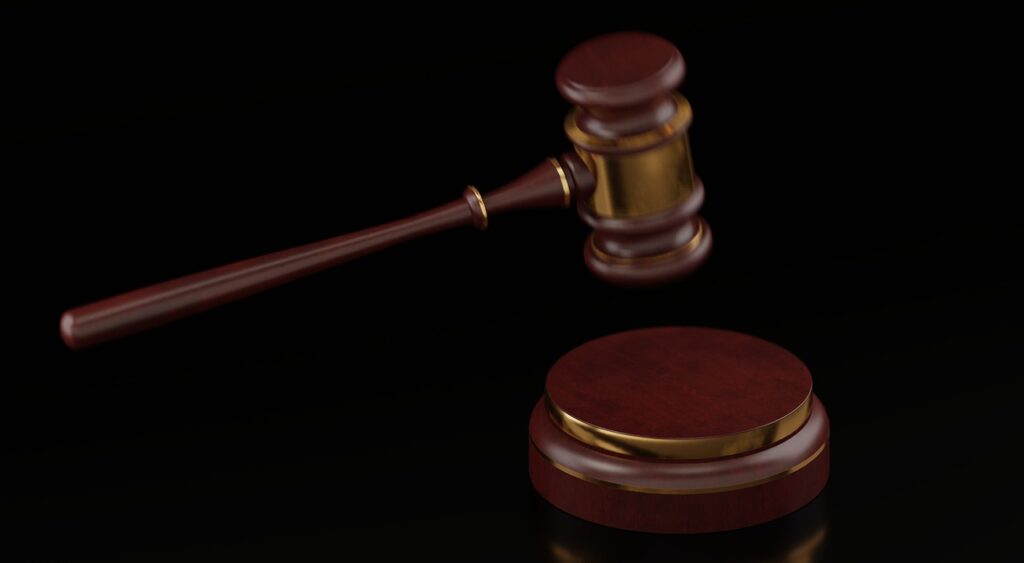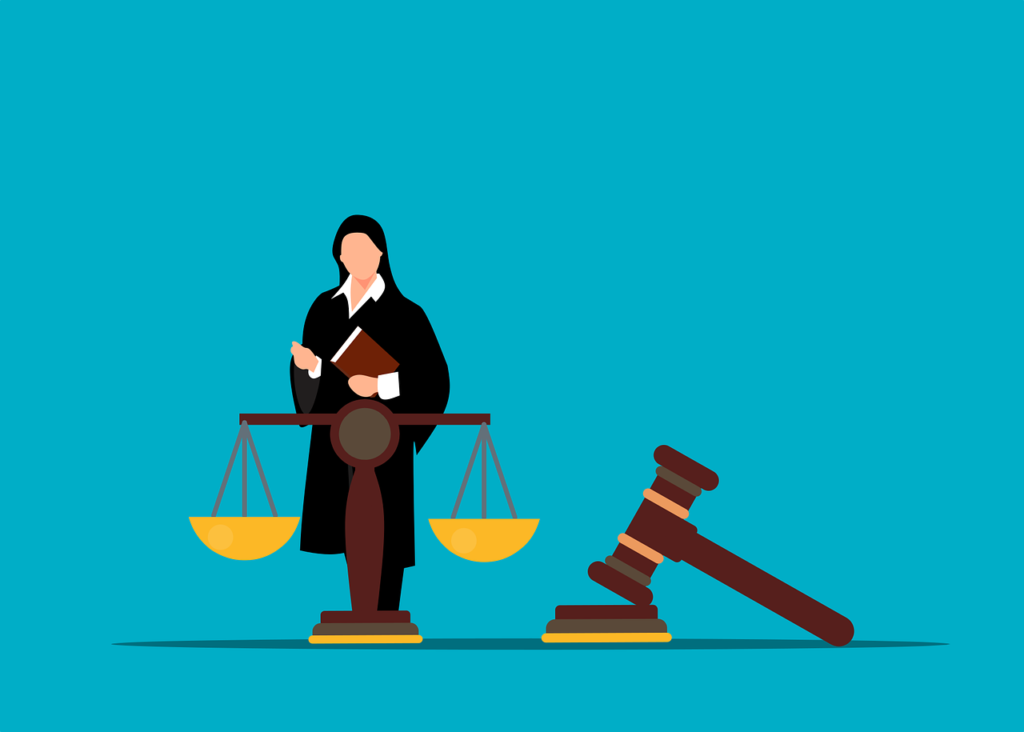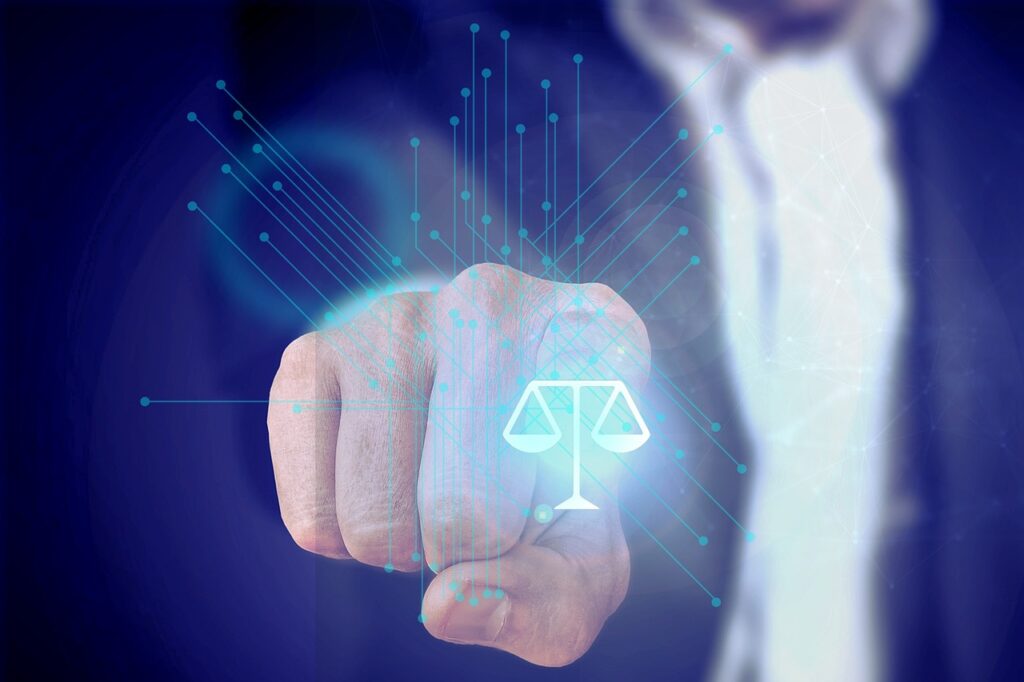Published On: October 13th 2025
Authored By: Tanmay Raghuvanshi
Law Centre-1, University of Delhi
Abstract
The digital revolution has radically reshaped the landscape of copyright protection and enforcement. This article discusses the changing challenges of copyright infringement in the digital era, scrutinizing the legal solutions available under Indian copyright law and the intricacies resulting from technological progress. By analyzing statutory law, court rulings, and international enforcement powers, this study diagnoses the loopholes in existing legal mechanisms and formulates cogent solutions to meet the challenges of digital piracy, intermediary liability, and new technologies like artificial intelligence.
Introduction
The digital era has transformed the production, dissemination, and consumption of content, ushering in unprecedented challenges to copyright protection. While technological progress has facilitated creative expression and global access to information, it has also created new ways of copyright infringement that go beyond conventional enforcement tools. The ease with which digital content can be copied, reproduced, and redistributed has led to wide-scale piracy, with resultant huge economic losses to creators of content and threatening the fundamental pillars of intellectual property law.
The legal framework in India on copyright protection largely is the Copyright Act, 1957, and to a lesser extent, the Information Technology Act, 2000, and their amendments. Yet, the speed of technological innovation has raced ahead of the development of legal frameworks, leaving behind gaps to be exploited by digital pirates with growing sophistication. The advent of hydra-headed piracy networks, border-transcending infringement, and the involvement of intermediaries that facilitate copyright infringement have obliged courts and legislators to create creative legal remedies amidst conflicting interests of creators, users, and platform providers.
The Evolution of Digital Copyright Challenges
The Scale and Scope of Digital Piracy
Digital piracy involves reproduction, distribution, or exploitation of copyrighted works without authorization. Digital piracy differs from other types of infringement in that it happens on an unprecedented scale through the use of peer-to-peer networks, illicit streaming sites, cyberlockers, and mirror sites that allow for the fast diffusion of copyrighted material. The international nature of the internet has created jurisdictional challenges, and it is becoming harder for copyright holders to locate infringers and seek effective remedies through the law.
The economic effects of digital piracy on creative industries are huge. A study shows that unauthorized consumption of digital content has a significant impact on earnings in film, music, software, and publishing industries. The rise of illegal streaming portals and torrent sites has led to an alternate economy where copyrighted material is capitalized using advertising profits without paying original creators.
Technological Enablers of Infringement
A number of technological advancements have made digital piracy large. Peer-to-peer (P2P) networks facilitate decentralized file sharing without central regulation, so it is challenging to find and prosecute individual infringers. Cloud storage services and cyber lockers offer hosting infrastructure for illicit material, and streaming technologies enable real-time access to copyrighted works without downloads. The application of encryption, virtual private networks (VPNs), and proxy services also makes enforcement more challenging by concealing the identity of infringers and their locations.
The emergence of social media sites and user-generated content introduces further complexities. Short video clips, reaction content, and mashup culture tend to include copyrighted material in forms that blur the line between fair use and infringement. The transformative character of these types of content poses challenges to applying old copyright doctrines in the digital realm.
Legal Framework in India
1. The Copyright Act, 1957: Foundation and Limitations
The Indian Copyright Act, 1957, amended in 2012, is the main legislation giving copyright protection in India. The Act confers rights of copyright owners, such as rights of reproduction, publication, performance, and adaptation. Section 51 is concerned with copyright infringement, which is caused by doing anything that violates such exclusive rights without permission from the owner of the copyright.
Nevertheless, provisions in the Act, written in the pre-digital age, are struggling to meet new patterns of infringement. The pre-digital idea of “copies” is unsatisfactory in the digital environment, where caches and temporary copies create doubt about infringement limits. The territorial scope of the Act also poses difficulties for enforcement against cross-border digital piracy.
2. Civil Remedies under Copyright Law
The Copyright Act covers a range of civil remedies for infringement such as:
- Injunctive Relief: Injunctions can be temporary or permanent to enjoin future infringement. Injunctive relief has come a long way with the advent of dynamic injunctions, which enable copyright owners to tackle new mirror sites and proxy sites without seeking new court orders.
- Monetary Damages: Infringing parties can recover damages for actual losses resulting from infringement. In assessing damages in computer piracy cases, there are special problems because it is hard to put a number on losses resulting from unauthorized downloading or streaming.
- Account of Profits: Infringers can be ordered to account and turn over profits gained by unauthorized exploitation of copyrighted content. This remedy would specifically apply for commercial piracy operations that make money from advertising or subscription schemes.
- Delivery of Infringing Copies: The courts have the power to order the seizure and destruction of infringing material. In the digital world, this is done by ordering blocking of infringing websites and removal of unauthorized content from online platforms.
3. Criminal Sanctions
Section 63 of the Copyright Act criminalizes copyright infringement with imprisonment for a term that may extend to three years and fine that can be between INR 50,000 and INR 2,00,000. The cognizability of copyright offenses gives powers to law enforcement agencies to carry out searches and seizures without warrants, offering deterrence against commercial pirate operations.
While the efficacy of criminal enforcement is hampered by resource limitations and jurisdictional complexities of international piracy networks, prosecuting individual consumers participating in casual piracy continues to be realistically challenging, thereby concentrating on commercial-scale infringers and platform providers.
4. The Information Technology Act, 2000: Intermediary Liability Framework
The IT Act, 2000, and the Information Technology (Intermediary Guidelines and Digital Media Ethics Code) Rules, 2021, form the constitutional framework of intermediary liability in India. Section 79 grants safe harbor immunity to intermediaries that are mere conduits for third-party information, provided that they comply with due diligence requirements as prescribed.
Under the 2021 Rules, intermediaries are required to promptly take down infringing material when presented with valid takedown notices and adhere to other requirements, such as the designation of grievance officers and activating automated content filtering systems. The Rules strive to strike a balance between copyright protection and protecting platform immunity and free speech rights.
Modern Day Enforcement Challenges
1. The Dynamic Injunction Solution
Indian courts have evolved the notion of dynamic injunctions to tackle the hydra-headed character of cyber piracy. In contrast to conventional injunctions that aim at precise URLs or domain names, dynamic injunctions allow copyright owners to block access to mirror sites and proxy websites without obtaining new court orders for every novel iteration.
The Delhi High Court’s path-breaking ruling in UTV Software Communications Ltd. v. 1337X. to set the ball rolling on dynamic injunctions against pirate sites. This new judicial tool identifies that static injunctions are not up to the task against piracy rings that constantly shift their online presence to stay out of reach.
Recent judgments like Warner Bros. Entertainment Inc. v. Moviesmod.bet have further clarified the ambit of dynamic injunctions, applying them to streaming websites as well as including automated notice mechanisms in the case of Internet Service Providers. These changes illustrate the courts’ flexible response to new technology-related issues.
2. Intermediary Liability and Safe Harbor Provisions
The history of intermediary liability under the IT Act documents the dilemma between copyright protection and platform innovation. The revised Section 79, read with the 2021 Rules, necessitates intermediaries to be vigilant while availing safe harbor immunity from third-party content liability.
The “notice and takedown” provision under Rule 3(1)(d) requires intermediaries to take down infringing content within 36 hours of receiving proper complaints. But enforcement of these provisions also raises issues of over-removal, automated censorship, and chilling of legitimate expression.
Platform-specific content identification technologies, like YouTube’s Content ID and Facebook’s Rights Manager, are technological solutions to enforcement of copyrights. Such automated systems utilize fingerprinting and pattern recognition to recognize potentially infringing content, allowing for proactive takedown before manual reporting.
3. Cross-Border Enforcement Complexities
The international character of digital piracy poses enormous jurisdictional hurdles for enforcing copyrights. The disparity of national copyright regimes, the differing enforcement powers, and the absence of standardized international procedures hinder efforts to combat cross-border infringement.
The application of takedown notices in non-DMCA jurisdictions is especially problematic. Whereas the U.S. DMCA is framed around standardized content removal, other jurisdictions might have varying requirements for effective takedown requests. The European Union’s Copyright Directive, for example, mandates proactive content filtering by platforms, raising potential tensions with reactive takedown-based frameworks.
International agreement through systems like the Berne Convention and TRIPS Agreement gives rise to cross-border protection of copyright. The agreements, however, fall short of containing enforcement procedures for digital piracy, and it is up to individual nations to formulate their own strategies towards international cooperation.
Technological Solutions and Emerging Challenges
1. Digital Rights Management and blockchain Technology
Digital Rights Management (DRM) systems offer technological measures for copyright protection through regulating access and use of digital content. Sophisticated DRM systems employ encryption, watermarking, and access controls to guard against piracy copying and distribution. Blockchain technology has potential applications in copyright management in terms of immutable record-keeping and smart contract automation. Blockchain systems can offer transparent copyright registration, royalty distribution automation, and increased traceability for digital content. The adoption of such systems is plagued by scalability issues and needs industry-wide action to be effective.
2. Artificial Intelligence and Copyright Implications
The advent of artificial intelligence in creative processes poses basic questions regarding copyright authorship and protection. AI-created content violates conventional concepts of human authorship, and AI systems trained on copyrighted works pose questions regarding fair use and liability for infringement. The employment of AI for content moderation is both a blessing and a curse for copyright enforcement. AI-driven detection tools can catch infringing content at scale, but also may flag false positives and have difficulty with subtle fair use decisions. Building advanced AI tools needs to be carefully calibrated to ensure enforcement efficacy as well as protection of user rights.
3. The Fair Use Doctrine in Digital Context
The use of fair use principles in the digital space raises difficult issues for platform providers and content creators. India’s fair dealing under Section 52 of the Copyright Act gives narrower exceptions than the broad U.S. fair use doctrine, leaving digital content creators who are doing commentary, parody, and transformative works uncertain. The growth in user-generated content, such as reaction videos, mashups, and short-form content, also tends to incorporate copyrighted material in ways that are likely to attract fair dealing protection. But the narrow scope of Indian fair dealing provisions gives rise to legal uncertainty and liability risk for content creators who would otherwise be helped by more expansive fair use protection.
International Perspectives and Best Practices
1. Comparative Analysis of Enforcement Mechanisms
Jurisdictions have evolved divergent strategies for digital copyright enforcement. The United States’ DMCA has a well-developed system of takedown notices and safe harbor privileges, while the European Union’s Copyright Directive places responsibility on platforms and encourages proactive filtering.
The United Kingdom’s strategy regarding dynamic injunctions has had implications for Indian jurisprudence, with British courts crafting advanced blocking orders that respond to the technical realities of online copyright infringement. These transnational precedents offer significant lessons for developing India’s enforcement systems.
2. Emerging Global Standards
Global bodies like WIPO are striving to establish harmonized solutions for digital copyright problems. The establishment of international standards for cross-border enforcement, intermediary liability, and copyright issues related to AI is a crucial step toward the resolution of the global nature of digital piracy. Regional agreements and bilateral cooperation mechanisms add further frameworks for international copyright enforcement. These agreements are able to facilitate information sharing, mutual legal assistance, and coordinated enforcement action against large-scale piracy enterprises.
Recommendations and Future Directions
1. Legislative Reforms
- Updating the Copyright Act: The Copyright Act needs to be thoroughly amended to handle digital age issues. This should involve clarification of temporary reproduction exceptions, broadened fair dealing provisions for transformative purposes, and specific provisions for content created by AI.
- Criminal Enforcement Enhancement: Increased criminal sentences and dedicated cybercrime units are required to act as a deterrent against commercial-scale piracy activities. Creation of specialized copyright courts with technical skills could enhance enforcement efficacy.
- International Cooperation Framework: India must strive to establish bilateral and multilateral agreements for copyright enforcement in the form of mutual legal assistance treaties and information sharing mechanisms with key jurisdictions.
2. Technological Solutions
- Improved DRM Implementation: Increased industry adoption of next-generation DRM technologies, along with blockchain-based rights management systems, can offer better protection for digital content while ensuring user accessibility.
- AI-Based Enforcement Tools: The creation of advanced AI tools for content detection and enforcement, designed to factor in considerations of fair use, can enhance the effectiveness and precision of copyright protection.
- Platform Accountability Initiatives: Enhanced standards for platform providers to develop proactive content monitoring and rights management mechanisms, balanced with safeguards for legitimate user-generated content.
- Stakeholder Involvement:
1. Industry Cooperation: Increased collaboration among content generators, platform providers, and technology firms can create industry-wide standards for copyright enforcement and fair use application.
2. User Awareness: Thorough public campaigns regarding copyright law and the value of honoring intellectual property rights can minimize casual piracy and encourage legitimate content consumption.
3. Academic and Research Initiatives: Ongoing research on the efficiency of copyright enforcement tools and the evolution of new technological applications demands ongoing academic and industry cooperation.
Conclusion
The digital era has radically changed the copyright protection landscape and posed challenges that need novel legal and technological responses. Indian copyright law lays down a framework for safeguarding creators’ rights, but the fast-moving nature of technology needs to be addressed through ongoing adaptation of legal frameworks and mechanisms of enforcement. The development of dynamic injunctions represents a significant judicial innovation in addressing the hydra-headed nature of digital piracy. However, comprehensive reform requires legislative action to modernize copyright law, strengthen enforcement mechanisms, and address emerging challenges such as AI-generated content and cross-border piracy.
The interplay between copyright protection and user rights continues to be a core problem in the digital world. Strong enforcement mechanisms should safeguard creators’ legitimate interests and leave room for innovation, fair use, and freedom of expression. The evolution of advanced technological solutions, combined with greater international cooperation, holds out the promise of more efficient and balanced copyright protection in the digital world.
While India continues to grow as a significant digital economy, the proper protection of copyright in the digital world becomes ever more important to support innovation, safeguard creative industries, and ensure that India remains a responsible member of the global intellectual property community. The obstacles are large, but the promise of evolving broad solutions that benefit all parties gives promise to the future of copyright protection in the digital world.
References
- Copyright Act 1957 (India), s 51
- Copyright Act 1957 (India), s 63
- Information Technology Act 2000 (India), s 79
- Information Technology (Intermediary Guidelines and Digital Media Ethics Code) Rules 2021
- UTV Software Communications Ltd v 1337X.TO (2019) CS(COMM) 724/2017 (Delhi High Court)
- Warner Bros Entertainment Inc v Moviesmod.bet (2024) CS(COMM) 738/2024 (Delhi High Court)
- M/s Knit Pro International v The State of NCT of Delhi (2022) SCC Online SC 505
- Shreya Singhal v Union of India (2015) 5 SCC 1
- Christian Louboutin SAS v Nakul Bajaj (2018) CS(COMM) 344/2018 (Delhi High Court)
- Universal City Studios LLC v Dotmovies.baby (2023) DHC 5842
- Agreement on Trade-Related Aspects of Intellectual Property Rights (TRIPS Agreement) 1994
- Berne Convention for the Protection of Literary and Artistic Works 1886
- Curbing Copyright Infringement with Dynamic Injunction (2022) SSRN Electronic Journal https://papers.ssrn.com/sol3/papers.cfm?abstract_id=4564448
- ‘The Impact of Developments in Artificial Intelligence on Copyright Law’ (2024) Journal of Legal and Social Studies
- ‘Copyright Challenges in the Digital Age’ WIPO China Conference (March 2025)
- World Intellectual Property Organization, ‘Understanding Copyright: A Life Skill’ WIPO Magazine (2012)



